Table of Contents
BLACKOUTS
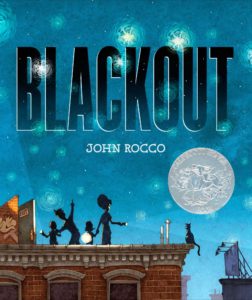
|
In John Rocco’s Blackout (Hyperion Books, 2011), it’s a normal city summer night – hot, loud, and busy – until, suddenly, the lights go out. Deprived of computer, television, and cookstove, a family is left to its own devices: making flashlight pictures, stargazing, eating ice cream with the neighbors. The experience is so rewarding that when the lights come back on, they decide to turn them off again and play a board game together. The illustrations, for which Blackout won a Caldecott Honor award, include panels and full-page drawings and segue from full color to a lights-off blue, black, and white; the stars are Van-Gogh-esque pinwheels. For ages 4-8. |
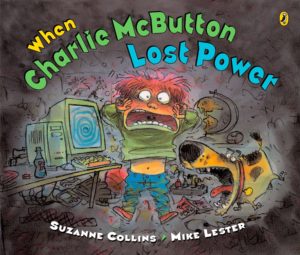
|
In Suzanne Collins’s cartoon-illustrated When Charlie McButton Lost Power (G.P. Putnam’s Sons, 2005), Charlie is a total techie kid (“The things that he liked involved handsets and bots”), whose world disintegrates when a lightning bolt knocks out the electrical tower. Desperate, he steals batteries from his sister’s talking doll, which only gets him in trouble; and eventually he comes to terms with his electricity-less situation and finds that imaginative play with his sister is fun. For ages 4-8. |
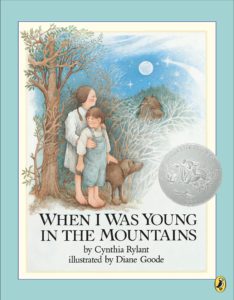
|
Cynthia Rylant’s When I Was Young in the Mountains (Puffin, 1993), with enchanting illustrations by Diane Goode, is a gentle story of what life was like in the rural hills of West Virginia – without plumbing or electricity, when there were kerosene lamps in the kitchen, water pumped from the well (and boiled for baths in the kitchen), and candlelit trips to the outdoor “johnny-house.” For ages 4-8. |
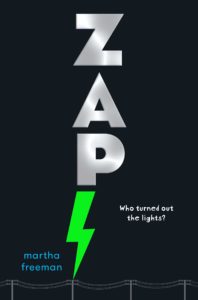
|
In Martha Freeman’s Zap (Simon and Schuster/Paula Wiseman, 2018), when a disastrous blackout hits Hampton, New Jersey, two sixth-graders tackle the mystery of who turned out the lights. An exciting mystery, plus science, for ages 9-12. |
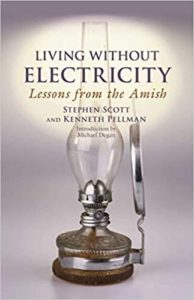
|
By Stephen Scott and Kenneth Pellman, Living Without Electricity (Good Books, 1990), illustrated with black-and-white photographs, explains how the Amish make do without electricity or modern appliances. Chapters cover various aspects of Amish life: “How Do You Light a Room Without Electricity?” “How Do You Keep Warm Without Centralized Heating?” “What Do You Do for Entertainment If You Don’t Have TV?” “How Do You Get Around Without a Car?” 128 pages long; for ages 12 and up. |
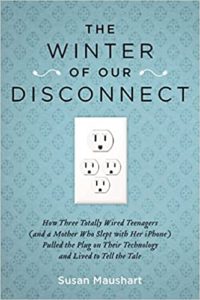
|
In Susan Maushart’s The Winter of Our Disconnect (Jeremy P. Tarcher/Penguin, 2010), the author and her three teenaged kids pull the plug on technology for six screen-free months – no computer, no cell phone, no iPod, no TV. A funny and fascinating exploration of the pros and cons of our now-electronic world. For older teenagers and adults. |
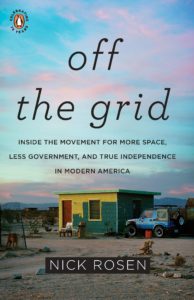
|
Journalist Nick Rosen’s Off the Grid (Penguin, 2010) is a journey in search of the growing movement of people seeking to live “off the grid,” free from dependence on electricity, telecommunications networks, government services, and mainstream culture. This is a human-interest book, rather than a how-to manual; it concentrates on many reasons for and ways in which different people attempt to live free. For older teenagers and adults. |
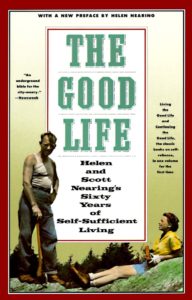
|
The classic off-the-grid story is certainly that told in Helen and Scott Nearing’s The Good Life (Schocken Books, 1990), an account of how the Nearings left New York City in the 1930s to life a self-sufficient life on a small farm, first in Vermont, then later in Maine. For older teenagers and adults. |
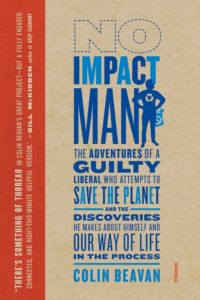
|
Colin Beavan’s No Impact Man (Farrar, Straus & Giroux, 2009) is an account of Beavan’s heroic year-long attempt to live with as little environmental impact as possible, smack in the middle of New York City. This involved giving up plastic, toilet paper, electricity, and motorized vehicles; eating local food; conserving water; and cutting down on trash. The book is peppered with observations, insights, and a lot of (sometimes appalling) statistics. Included is a helpful resource list. For families. |
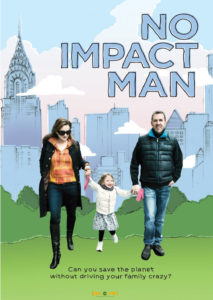
|
No Impact Man: The Documentary (2009) is a 93-minute film based on the book. |
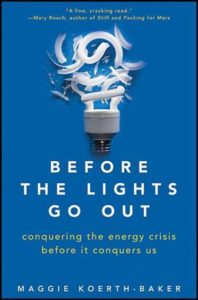
|
Maggie Koerth-Baker’s Before the Lights Go Out (John Wiley & Sons, 2012) is a thoroughly interesting and wholly reader-friendly overview of the energy crisis that faces us and its possible solutions. There’s no easy fix, Koerth-Baker explains, and the solution will inevitably involve multiple approaches rather than a single miraculous one-size-fits-all. Readers also learn where our current electrical grid came from in the first place and meet a lot of innovative and optimistic energy pioneers. For older teenagers and adults. |
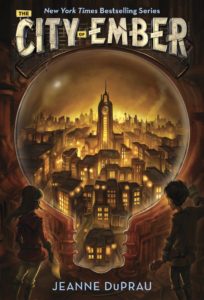
|
Jeanne DuPrau’s aging City of Ember (Yearling, 2008) would exist in perpetual darkness if not for the (increasingly feeble) floodlights that struggle to provide twelve hours of gloomy “daylight.” The inhabitants of Ember have long since forgotten their origins, and it’s left to two twelve-year-olds – Lina Mayfleet, put to work as a messenger, and Doon Harrow, assigned to the Pipeworks, site of the city’s failing electrical generator – to solve the mystery of the city’s past and save its inhabitants. Three sequels. For ages 8-12. |
| Also see the film version of City of Ember (2008), directed by Gil Denan. It’s rated PG (for peril). | |
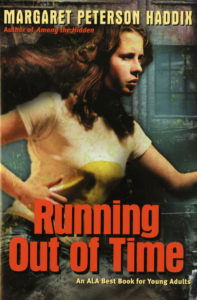
|
Jessie, the protagonist of Margaret Peterson Haddix’s Running Out of Time (Simon & Schuster Books for Young Readers, 1997) believes that she lives in the village of Clifton, Indiana, in 1840. When diphtheria strikes the town, however, Jessie’s mother reveals that Clifton is really a reconstructed museum village, project of an eccentric millionaire – and Jessie must escape to the outer world of 1996 to find help. Not only is this an exciting adventure, but a clever twist on time-travel as Jessie suddenly has to cope with a world of electric lights, telephones, and automobiles. For ages 9-13. |
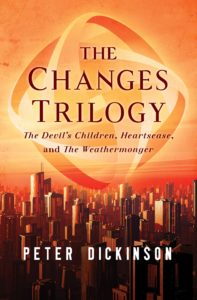
|
In Peter Dickinson’s Changes trilogy, originally published between 1968 and 1970, England is suffering from a time known as “The Changes” in which suddenly, inexplicably, the populace has turned against machines and reverted to a state of medieval peasantry. The few hold-outs who hoard modern machinery are accused of witchcraft. The three books in the series are The Devil’s Children, Heartsease, and The Weathermonger. All, though out of print, are readily obtainable through libraries and used-book suppliers. For ages 12 and up. |
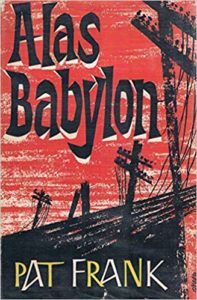
|
Pat Frank’s now-classic Alas, Babylon (Harper Perennial, 2005), originally published in 1959, was one of the first post-apocalyptic novels of the nuclear age, based in a small town in central Florida. The protagonist, Randy Bragg, has some warning of the impending strike from his brother, a military officer, who sends his wife and young children to stay with Randy, hoping this will keep them out of harm’s way. The little town does survive “the Day,” as the global holocaust comes to be called, but their way of life is gone forever, as electricity fails; food, water, gasoline, and medical supplies are exhausted; and “highwaymen” take to preying on the townspeople. For ages 12 and up. |
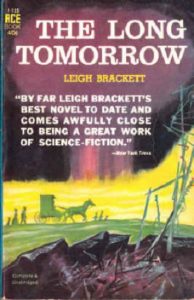
|
In Leigh Brackett’s The Long Tomorrow (Phoenix Pick, 2011), now a sci-fi classic, America has been destroyed in a nuclear holocaust and the survivors blame technology for the disaster. The protagonists, young cousins Len and Esau, live in a New Mennonite farming community called Piper’s Run, but long for a different way of life, having been fascinated by their grandmother’s stories of a time when there were electrified cities, airplanes, televisions, and automobiles. After discovering a radio set said to come from Bartorstown – a mysterious town attempting to bring back the old technologies – the boys run away to find it. For ages 12 and up. |
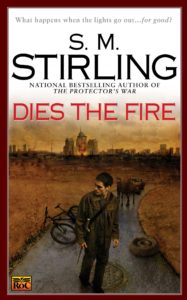
|
In S.M. Stirling’s Dies the Fire (Roc, 2005), “the Change” has inactivated all modern technology, including electricity and explosives. Survivors group themselves into bands and communities, struggling to forge new lives and to protect themselves from warlords and marauders. Among the survivors: a Marine pilot, now leader of the Bearkillers; folksinger Juniper Mackenzie, now leader of Clan Mackenzie; and Norman Arminger, ex-medieval professor, now leader of the threatening Portland Protective Agency. The first of a series. For ages 14 and up. |
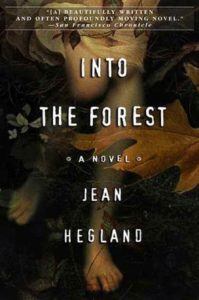
|
Jean Hegland’s Into the Forest (Dial, 1998) is the story of Nell and Eva, two teenage sisters who live in the redwoods of northern California at an unspecified time in the not-so-distant future when the world as we know it is coming to an end. Their parents die; electricity and phones go out; fuel and food supplies dwindle; and in the outer world, violence prevails. Eventually the girls must come to terms with their new primitive life in the forest. For ages 14 and up. |
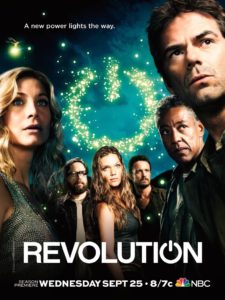
|
In J.J. Abrams and Eric Kripke’s NBC series Revolution, the lights have suddenly gone out, cars have stopped, planes have fallen out of the sky. For fifteen years now, the world has been in a black-out; survivors live in small farming communities, under the thumb of an ominous leather-armored militia. The Matheson family possess an artifact that may hold the key to the power collapse and the means of reversing its effects, which puts them at risk from various malefactors. Young Charlie Matheson (a girl and a whiz with the crossbow) sets off with a band of companions to distant Chicago to rescue her brother, kidnapped by the militia, and solve the mystery. |
